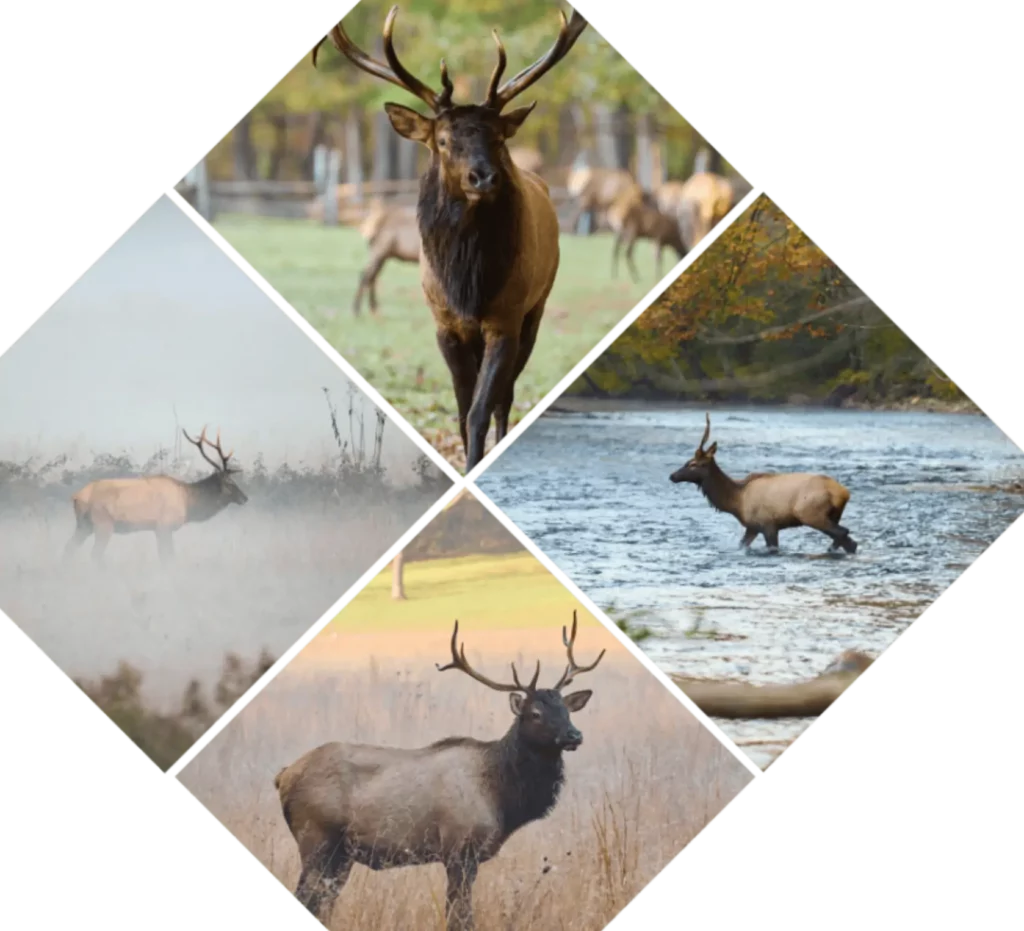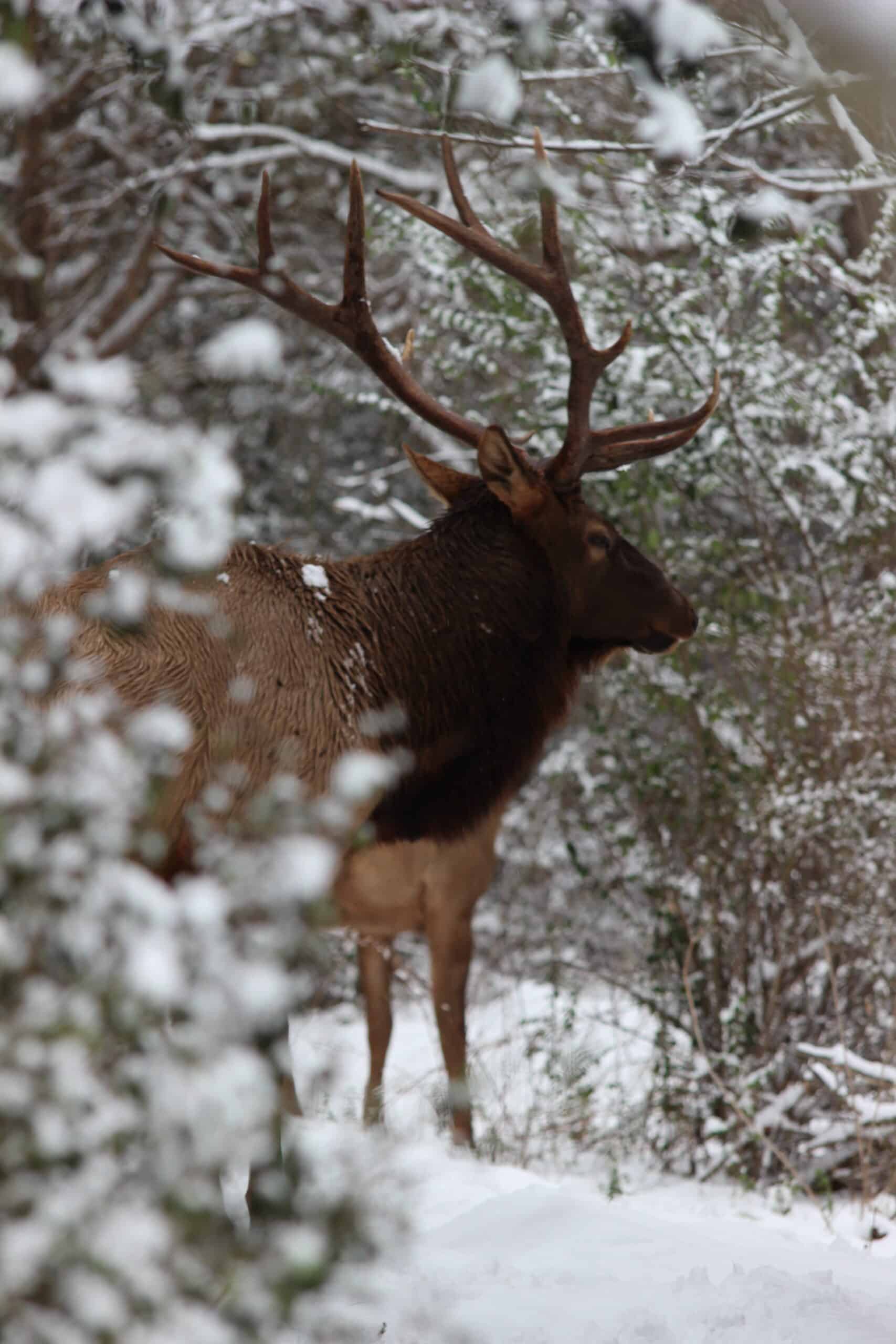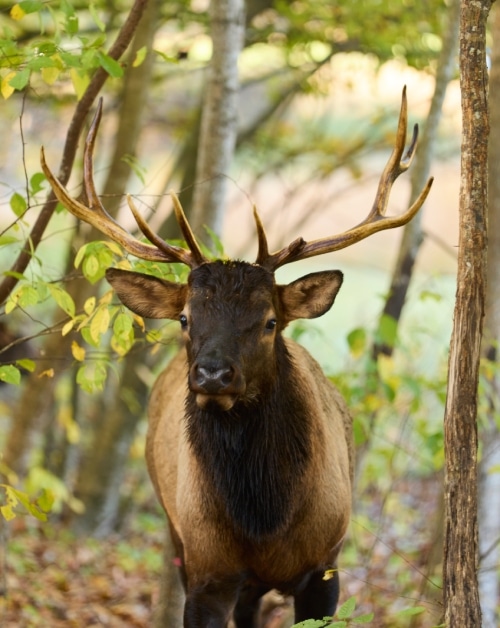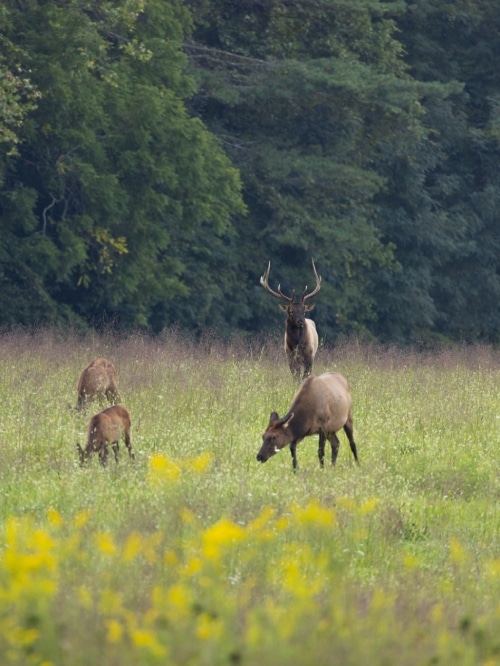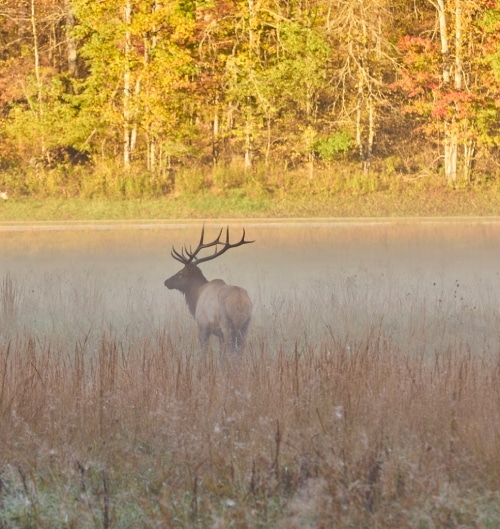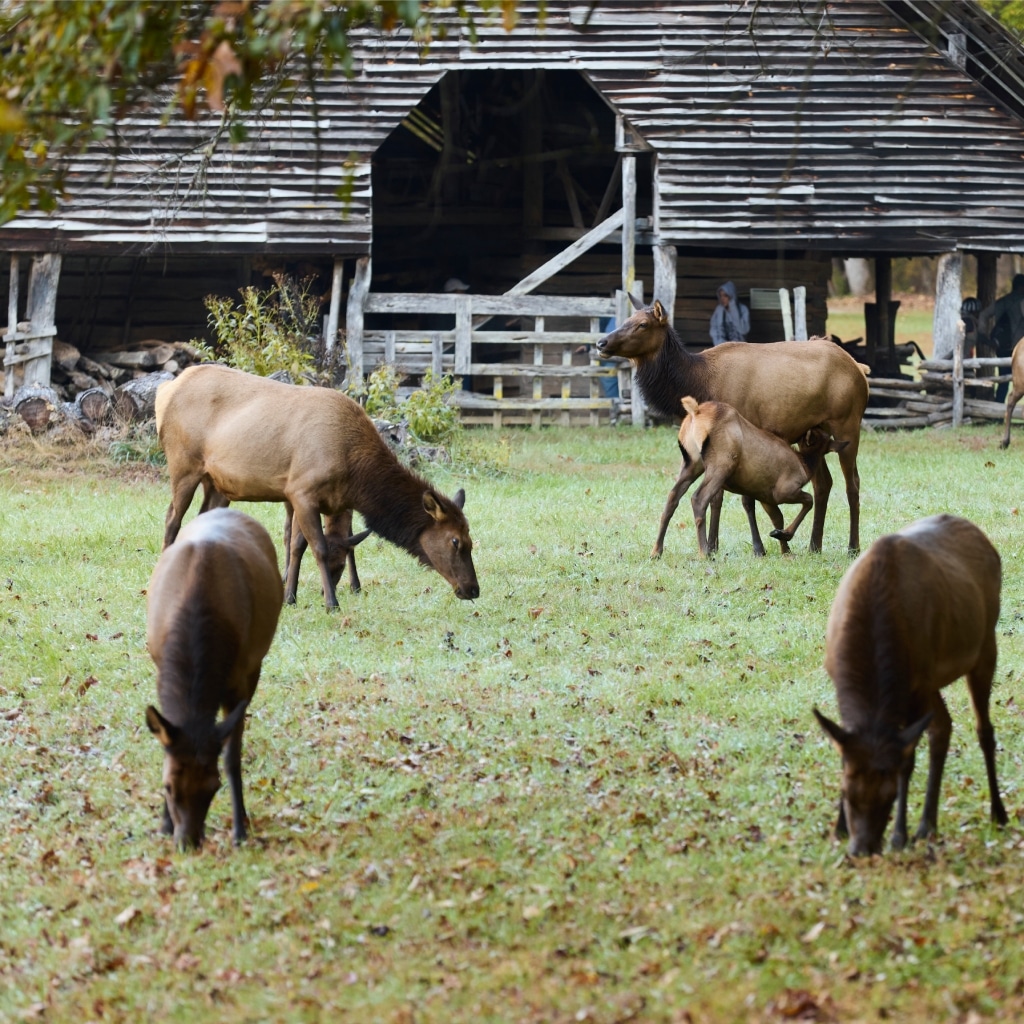Elk viewing in Cherokee
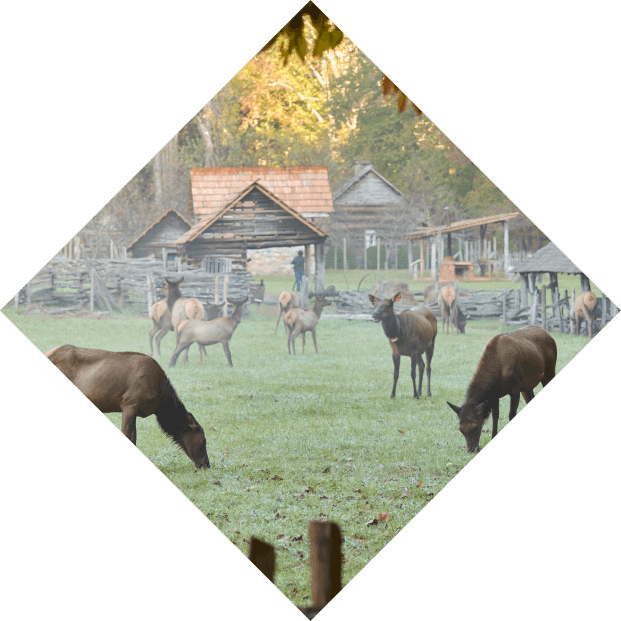
Root for the home team.
Don’t be surprised to see your companion in the midst of a surprised double take. Was that an elk I just saw? Yes, it was. And how often do you get to gaze at a herd of elk grazing in the wild? Along with a chill up the spine, the sight of them brings the old Cherokee life of hunting and gathering back into even closer view.
Elk in the North Carolina Smokies
Come see elk near Cherokee, NC. Grazing herds of elk can often be spotted in the Smoky Mountains, most often at Cataloochee Valley and in the fields that surround the Oconaluftee Visitors Center. Elk have even been seen forging the Oconaluftee River on occasion.
A successful experiment in modern elk sustainability.
Centuries ago, vast herds of elk roamed the southern Appalachians. Eastern elk weighed up to 1000 pounds and were known for their fearlessness. They quickly became one of the most popular game animals among settlers to the region. Overhunting led to a decline of herd by the end of the 18th Century. The last of the eastern elk disappeared from North Carolina in the 1790s. The National Park Service successfully reintroduced elk to the Cataloochee Valley in Great Smoky Mountains National Park in 2001.
Early 2001 marked the appearance of the first elk to set its hoof on the soil of Great Smoky Mountains National Park since the turn of the nineteenth century. The intention of this reintroduction of elk was to determine if it was possible for elk to sustain themselves here after a 200-year absence. Over twenty years later, the park and the surrounding area are home to approximately 140 elk.
Tips for Seeing Elk in the North Carolina Mountains
Surrounded by the Smoky Mountains, it’s no surprise that Cherokee is one of the top spots for viewing wildlife like the native elk. They are sometimes spotted grazing in the fields near the Oconaluftee Visitor Center. Some of the best viewing is at Cataloochee, north of Waynesville. We invite you to come and find them. But will your friends believe you when you tell them you saw wild elk? You may have some explaining to do—so bring a camera.
If you are planning to look for elk on your trip to North Carolina, here are a few tips that will help you in your search.
- Elk prefer to feed in cool weather, so they usually come out to graze in the early hours of the morning or late in the evening.
- Please bring your camera and binoculars. Though elk may appear to be gentle, these are wild creatures that should only be viewed from a distance.
- Both males and females have been known to charge at people who get too close.
- Bulls are territorial, and cows are very protective of their calves. If you see an elk calf lying alone in tall grass, do not approach it. You can be sure that its mother is grazing nearby.
- Please don’t try to feed or touch elk. It is illegal to get closer than 150 feet to an elk in Great Smoky Mountains National Park.
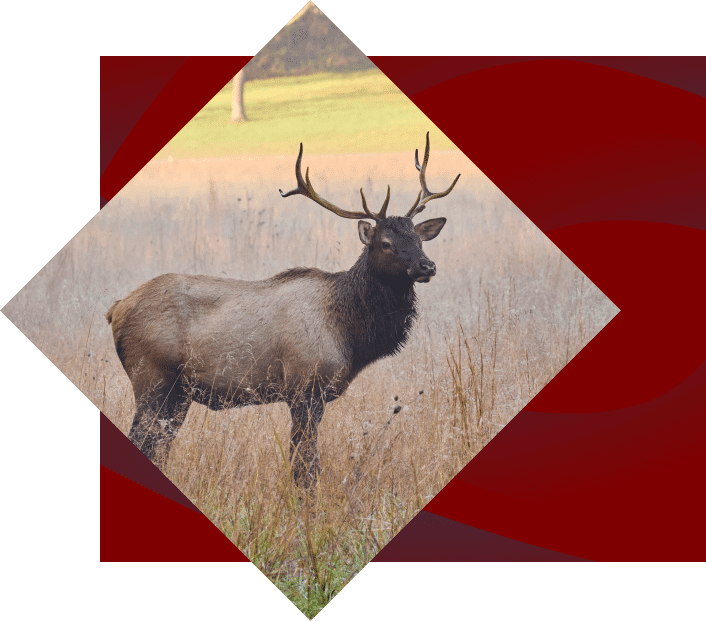
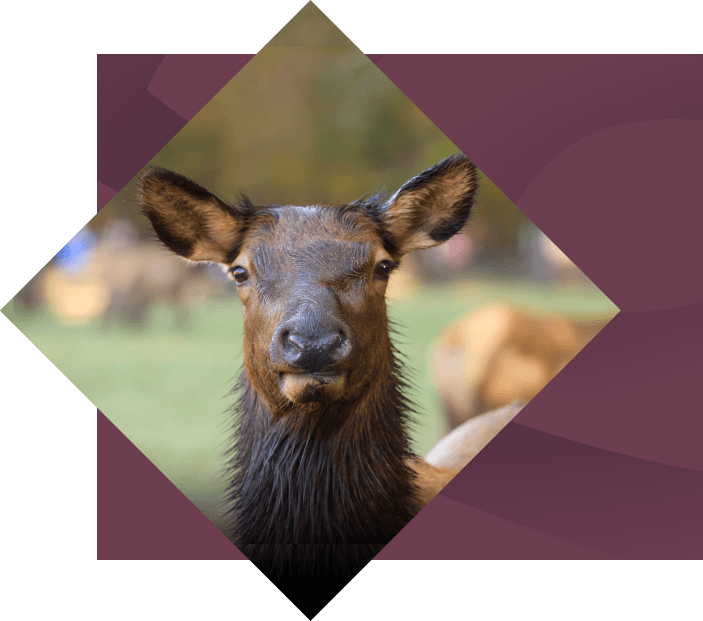
Facts About the Smoky Mountain Elk Herd
Elk are the largest animals that live in Great Smoky Mountains National Park. Adults can grow to be up to 10 feet long from nose to tail. Male elk, which are called bulls, weigh up to 800 pounds. Female elk, called cows, weigh up to 600 pounds. Though elk are giants, they are a vegetarian species that survives on a diet of grasses, shrubs, trees, and other types of forest plant life.
Bull elk naturally shed their antlers and then regrow an impressive new set every year. Some antlers have been spotted that span up to five feet across! A fully-grown set of antlers can weigh up to 50 pounds. Their antlers grow fast, up to an inch a day. In fact, it is thought that elk antler is the fastest growing tissue of any animal species on the planet. Come to the North Carolina Smokies at the end of August to see bulls when their antlers are fully grown.
The fall “rut” or breeding season is possibly the most exciting time to come to North Carolina to see elk. Between mid-September and late October, you can hear the distinctive mating call of the bulls, a sound called “bugling.” You may also hear the clash of antlers during elk breeding season, as the bulls challenge each other in a battle for dominance. Elk calves are born between mid-May and mid-July.
Stay and play
Each place you visit in Cherokee pulses with the stories and significance of a people whose roots run deep and whose ancient wisdom is fascinating to uncover. Nestled in the lush landscapes of Western North Carolina, Cherokee invites you to smell the wood smoke and open your ears. If you listen closely, maybe you can hear the chanting of the little Nunnehi people of the mountain peaks. No need to resist Cherokee’s invitations to dive right in. Fire off a blowgun if you dare, but make sure your spouse is in the clear. As you cast your line into the trout-filled rivers or wash your face in the sweet spray of a waterfall, let the powerful feelings of Cherokee carry you. Even if it’s just for a day or two.
